The Road to Liberty - a U.S.A. PDM AAR
- Thread starter rorlegion
- Start date
-
We have updated our Community Code of Conduct. Please read through the new rules for the forum that are an integral part of Paradox Interactive’s User Agreement.
You are using an out of date browser. It may not display this or other websites correctly.
You should upgrade or use an alternative browser.
You should upgrade or use an alternative browser.
Congratulations rorlegion on being nominated for the Weekly AAR Showcase. Your After Actions Report on the United States is a very nice read indeed.
Also don't forget to nominate the next candidate for the Weekly Showcase in the following week.
Also don't forget to nominate the next candidate for the Weekly Showcase in the following week.
Thank you for the nomination and the compliments! I humbly accept and wish to thank the warm and welcoming AAR community here.
I've been reading through other AARs the past few weeks and have one in mind for next week's nomination.
I've been reading through other AARs the past few weeks and have one in mind for next week's nomination.
Vol. III, Chapter 2: The Mexican-American War
Realization of Manifest Destiny
October 12, 1847
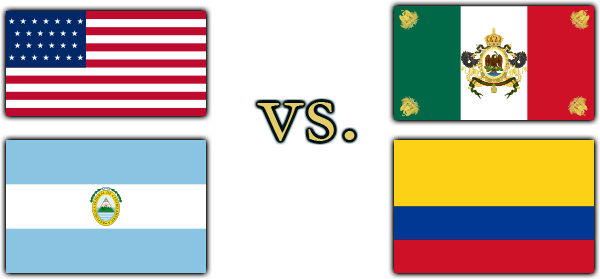
Realization of Manifest Destiny
October 12, 1847

After the Texan Revolution of 1836, the Mexican-Texan border was never clearly established. The Republic of Texas claimed land as far west and south as the Rio Grande flowed. Mexico never recognized these claims, even after the Treaty of Velasco, and asserted that the border lay along the Nueces River and as far north as the U.S. Indian Territory. When the United States annexed the Texan Republic in 1845, the U.S. inherited these border disputes. Coupled with a threat of war by the Mexican Emperor, Charles Ferdinand, President Polk thought it time that Manifest Destiny be realized.
In his message to Congress, Polk stated, "After my inaugural address, I informed you that upon the convention of Texas I had ordered an efficient military force to take position between the Nueces and the Del Norte rivers. This became necessary to meet a threatened invasion of Texas by the Mexican forces, for which extensive military preparations had been made. The invasion was threatened solely because Texas had determined, in accordance with a solemn resolution of the Congress of the United States, to annex herself to our Union, and under these circumstances it was plainly our duty to extend our protection over her citizens and soil."
"An open act of hostility was committed on the 13th of November. A party of dragoons of 63 men and officers were on this day dispatched from the American camp up the Rio del Norte, on its left bank, to ascertain whether the Mexican troops had crossed or were preparing to cross the river, became engaged with a large body of Mexican troops, and after a short affair, in which some 16 were killed and wounded, appeared to have been surrounded and compelled to surrender. It is now clear the Empire of Mexico has passed the boundary of the United States, invaded our territory, and shed American blood upon American soil. She has proclaimed that hostilities have commenced, and that our two nations are now at war."
Congress declared war two days later, on December 14, 1846. The U.S. claimed all of Texas and the Mexican territories of New Mexico and New California. President Mariano Rivera Paz of the USCA agreed to assist the U.S. and claimed the Yucatán peninsula, which had attempted to cede from Mexico and join the Central American states when the Mexican Republic fell just a few years before. Colombia was compelled to aid in the defense of Mexico via the 1844 Treaty of Veracruz.
War Plan:
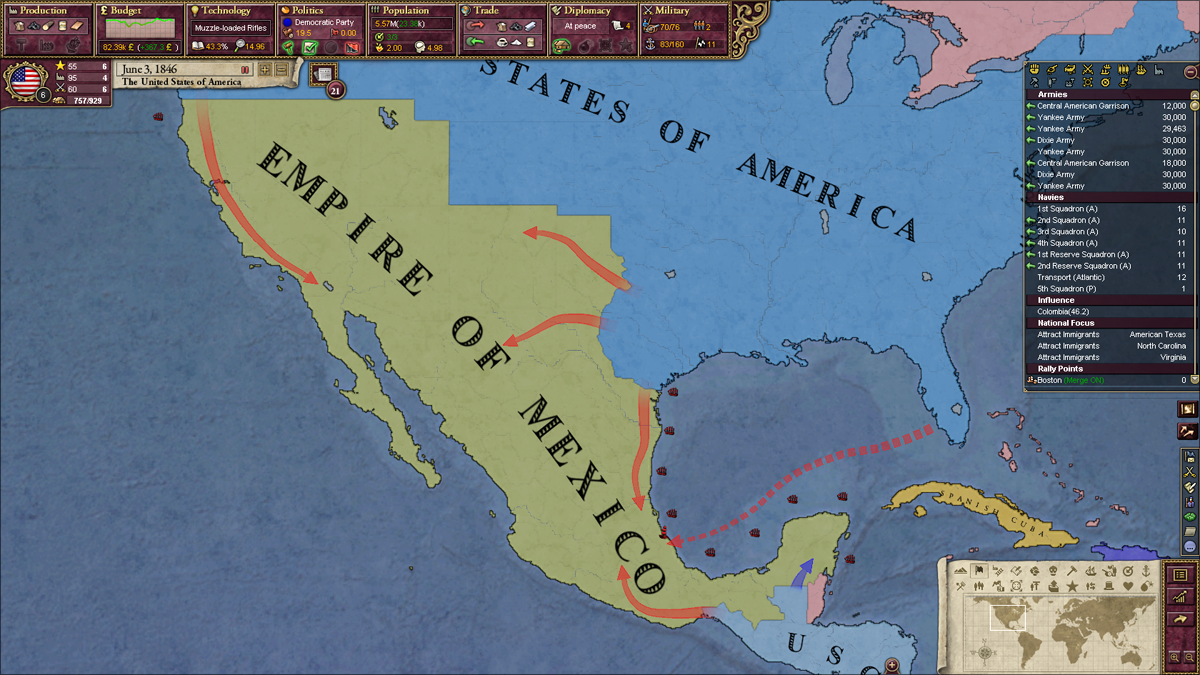
Developed by War Secretary Marcy and Navy Secretary Mason
The war plan developed by cabinet members is fairly straightforward. 30,000 men stationed in Oregon would occupy lands along the Californian coast and hold a line in Los Angeles. 90,000 troops in Texas would engage Mexican troops stationed along the border and occupy Mexican colonies. 30,000 troops were ordered to sail from Florida and land in Veracruz, where they could reinforce the Central American Garrison, who had orders to occupy Mexico City. Half of the Central American army would occupy the Yucatán, while the other half would hold back any Colombian troops attempting to cross into Costa Rica. American warships in the Atlantic were ordered to blockade all Mexican ports in the gulf, and the Pacific fleet was to patrol the waters along the California coast and relay information of enemy troop movements to the American troops occupying California.

Pictured: American troops landing at Veracruz.
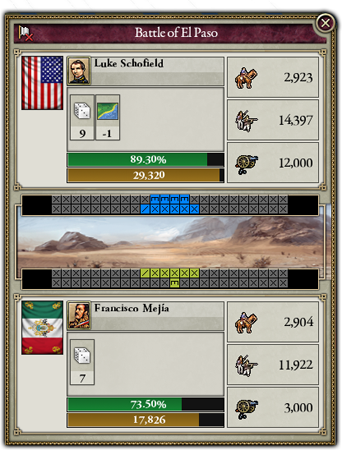

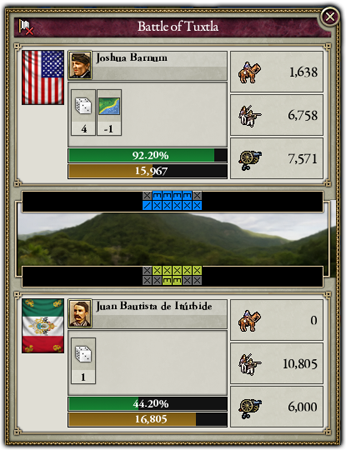
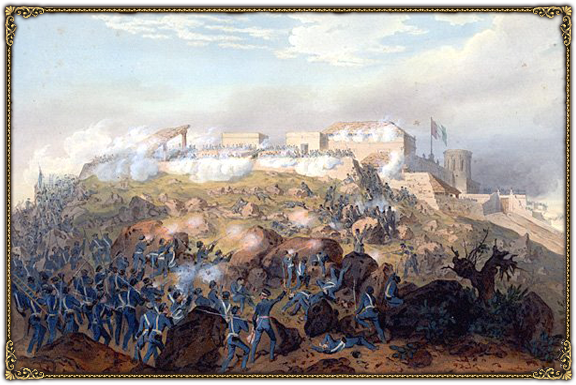

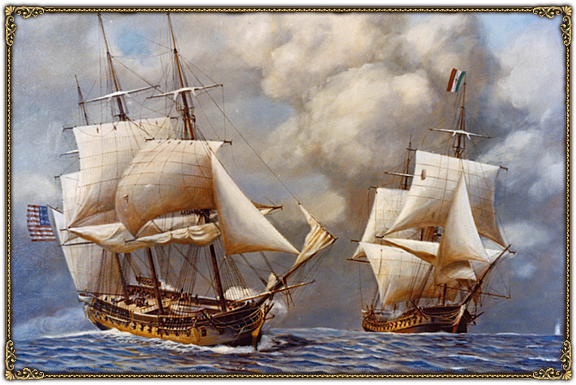
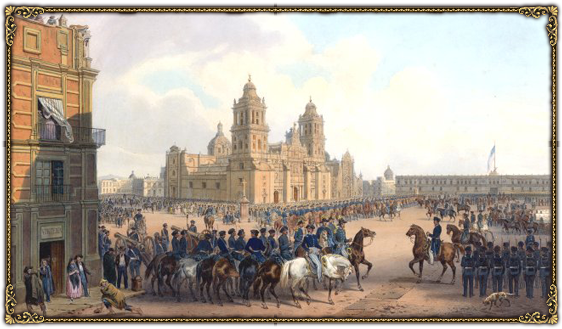
Pictured: General Richard Banks and the U.S. Army in the occupation of Mexico City.
In early September 1847, the 30,000 men of the Central American Garrison, under Richard Banks, and with one-third of the force that landed at Veracruz months earlier, marched unopposed into Mexico city. At this point in the war, it appeared loyalty to the foreign emperor largely had waned, and desertion was rampant among the Mexican armed forces. It is rumored that Mexican citizens directed General Banks to the southern door of the National Palace, who casually walked up to the door, politely knocked, and exclaimed, "It's time to go home, 'emperor.'"
It took some time before word of the ceasefire spread from the jungles of Colombia to the frontiers of California and New Mexico, but the U.S. was triumphant. The republic was on the verge of spreading civilization from coast to shining coast. The eagle had finally spread its wings.
Notable Battles:
Battle of Loredo - Victory - Enemy completely routed
Battle of Eureka - Victory - Enemy retreated to Sacramento mountains
Battle of Tuxtla - Defeat - Retreated to Minatitlán
Battle of Tapachula - Defeat - Retreated to Guatemala
Battle of El Paso - Victory - Enemy completely routed
Battle of San Francisco - Victory - Enemy retreated to Monterey
Battle of Monterey - Victory - Enemy retreated to Los Angeles
2nd Battle of Tuxtla - Victory - Enemy retreated to Tapachula
2nd Battle of Tapachula - Victory - Enemy completely routed
Battle of Coast of California - Defeat -No losses
Battle of Belize Bay - Defeat - Loss of four frigates
2nd Battle of Belize Bay - Victory - Five enemy warships sunk
((OOC: I've gathered up all the art and statistics for the next post. It'll be about the Treaty of Guadalupe-Hidalgo and ancillary matters. I should have it finished early tomorrow.))
Last edited:
*Standing ovation*
This is such a beautiful AAR, and so well written. I've only made it through the first few updates so far, but I wanted to take a minute to tell you how much I love your presentation.
This is such a beautiful AAR, and so well written. I've only made it through the first few updates so far, but I wanted to take a minute to tell you how much I love your presentation.
Just discovered this, fantastic mix of great writing and impressive visuals, very much looking forward to getting caught up! You've also prompted me to look into the save game analyser, looks like a very handy tool.
Last edited:
Excellent once more, solid victory against Mexico, looking forward to the Treaty update.
A great update, but I did spot an error. You mistakenly typed "1837" twice at the end instead of "1847".
Subscribed.
I am looking forward to how this plays out. I hope that if I can gather some data for additional fixes & tweaks.
...hopefully the world won't go full commie past 1880. ^^"
I am looking forward to how this plays out. I hope that if I can gather some data for additional fixes & tweaks.
...hopefully the world won't go full commie past 1880. ^^"
Subscribed.
I am looking forward to how this plays out. I hope that if I can gather some data for additional fixes & tweaks.
...hopefully the world won't go full commie past 1880. ^^"
Thanks for subscribing and thanks for making a great mod!! It brings challenge back to PoD - something that was severely lacking.
A great update, but I did spot an error. You mistakenly typed "1837" twice at the end instead of "1847".
Good eye! fixed.
I like what I see here a lot! Nice work rorlegion
Thanks! I just read a few posts of your American HoI3 AAR - AMAZING! I'm going to catch up tomorrow.
Will you allow the Habsburg Emperor to keep his throne?
I think I will, but I'd like to see him overthrown. It will give me a pretext to take "Southern California" AKA the Baja region from Mexico
Sorry for the delay in the next update. It should be out tomorrow. I'm going to try and do two updates this weekend. I just watched "12 Years a Slave" last night and will attempt to write a short story inspired by that movie sometime before the civil war - most likely when PDM's "Slavery Question" event fires (I think it's called slavery question or something like that).
Last edited:
Vol. III, Chapter 3: The Treaty of Guadalupe-Hidalgo
From Sea to Shining Sea
June 2, 1848
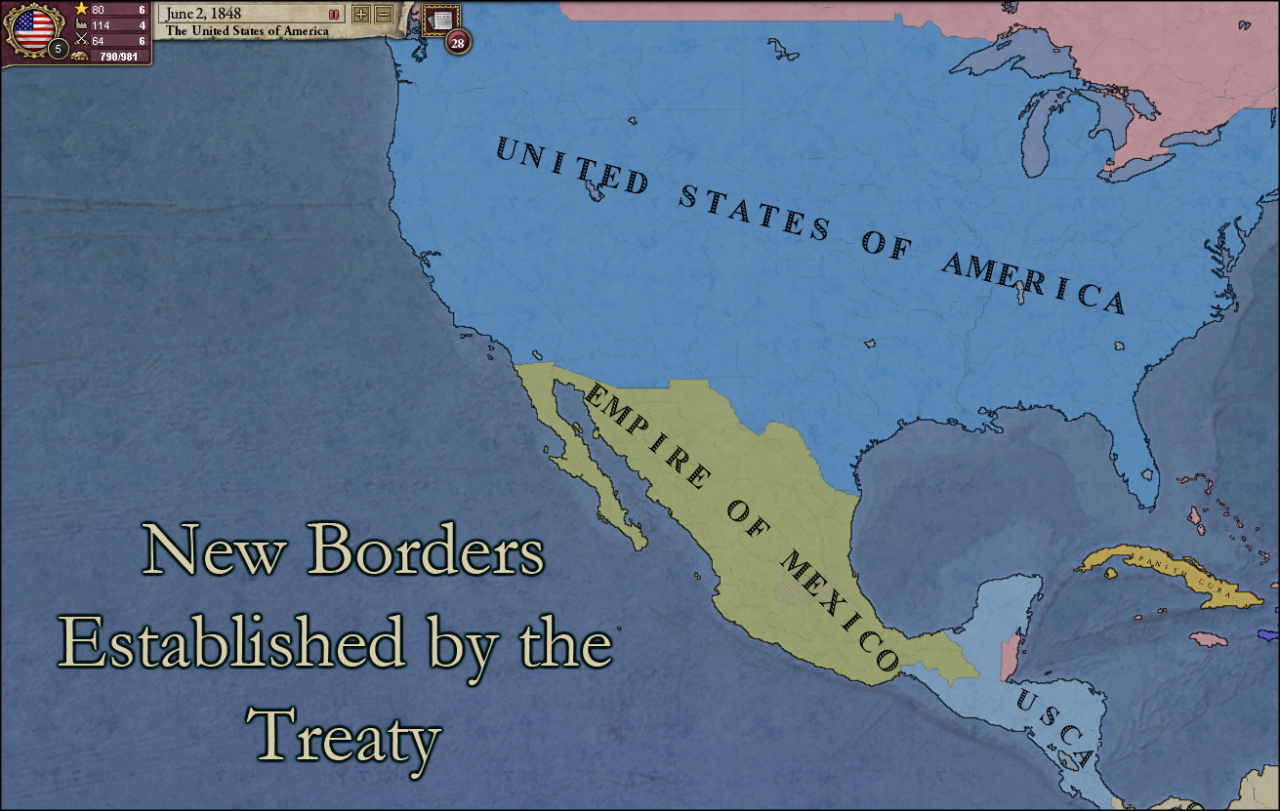
From Sea to Shining Sea
June 2, 1848

June 2, 1848 marked the end of the Mexican-American war. With his armies crushed, and popular support virtually non-existent, Emperor Charles Ferdinand of Mexico was forced to sign a peace with the United States and the USCA. This treaty gave authority to the U.S. to annex 900,000 square miles of Mexican territory and the USCA to annex the Yucatán peninsula as a federal state. In exchange, the U.S. paid £100,000.00 to the Mexican Emperor (approx. £9.00 per square mile) and agreed to allow the continued monarchical rule over Mexico.

Though the Treaty promised to respect the property rights of the now Mexican-American citizens who remained, the U.S. Government largely ignored this part of the treaty and sold parts of Mexican-owned land to white settlers. In order for this treaty to pass in the Senate, provisions allowing for slavery were stricken. These new territories would not allow slavery, which angered many voters in the southern U.S.
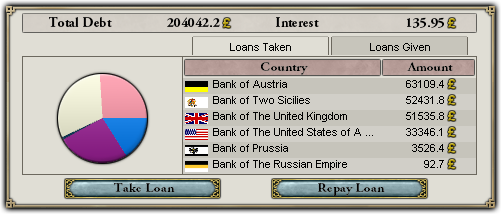
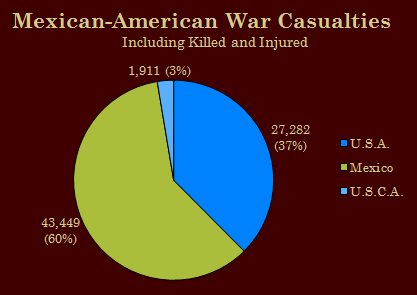
The U.S. sustained significant casualties as a result of the war, ranking it the second bloodiest war in its history. For comparison, over 50,000 U.S. troops and militia were killed or wounded in the American Revolutionary War, and over 20,000 troops were killed or wounded in the War of 1812. Despite the long-term benefits of establishing this new national border, pacifist fervor has gripped the young American nation, and it appears the Democrats have lost support in most, if not every, state in the Union.
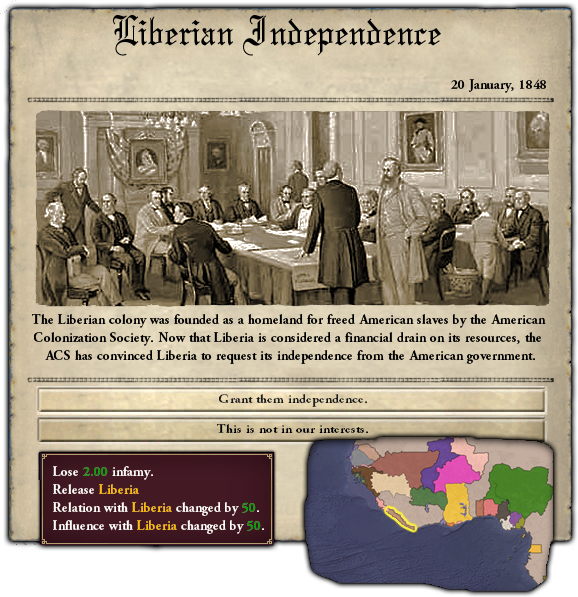
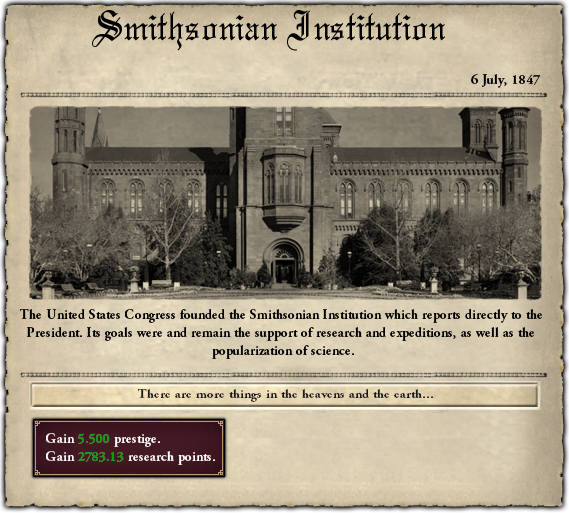
The Republic of Liberia was established in 1820 as the first U.S. colony in Africa. It was settled primarily by freed slaves who wished to return to their roots rather than remain in mainland America. During the war, it declared independence from the U.S., establishing its sovereignty as an independent nation with its very own constitution. Polk's administration has not issued an official statement, though rumors have it that Liberia's opportunistic declaration of independence is ill-favored among prominent Senate and cabinet members.
Also known as "the nation's attic," the Smithsonian Institution was established on July 6, 1847. It was funded by the gift of a British scientist's son, bequeathed by will, for the increase and diffusion of knowledge in the young republic. The institution will house national artifacts and display important historic relics and scientific developments to the public.
Whig party members jumped at the opportunity to criticize President Polk's administration for not applying the large sum to the national debt. Combined with the growing pacifist movement and unpopularity of the Democrat's rule, the Whigs are anticipated to win the coming election by a landslide.
Last edited:

